The healthiest food combinations, according to experts
Culinary power couples
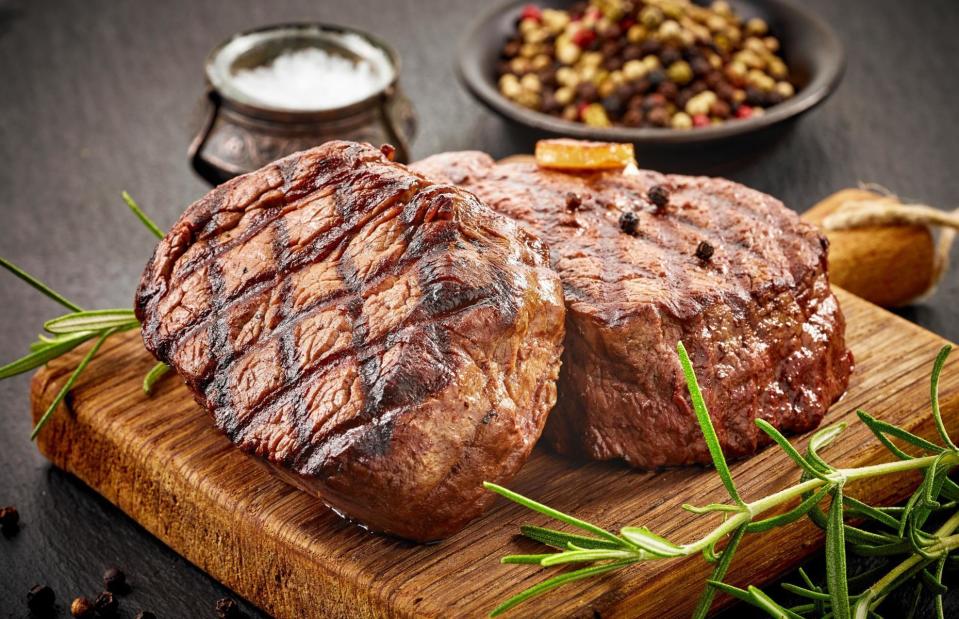
MaraZe/Shutterstock
Salt and vinegar, tomato and basil, chilli and chocolate... Some flavours are just meant to be together. But did you know savvy ingredient pairing can also bring some added health benefits to the table? Whether it's by unlocking micronutrients, blunting energy spikes or just helping to make nutritious but challenging flavours a little more palatable, clever food combinations are a great way to complement a balanced diet.
We asked registered nutritionist Jen Walpole to give us the lowdown on some culinary power couples.
Apple and nut butter
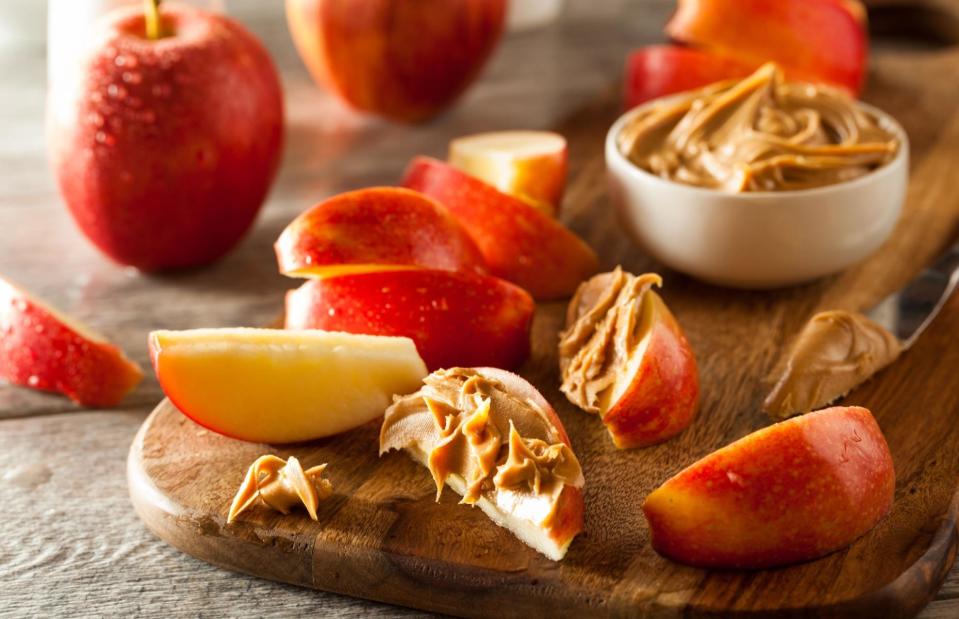
Brent Hofacker/Shutterstock
Fruit is the ultimate healthy snack, but the sweetness of natural fructose can play havoc with our blood sugar. "How we eat things is as important as what we're eating," says registered nutritionist Jen Walpole. "An apple on an empty stomach will behave very differently in our bodies – and have a much bigger impact on our blood sugar – than it would if eaten after a meal, or if paired with a nut butter, which also contains protein and healthy fats."
Carrots and avocado
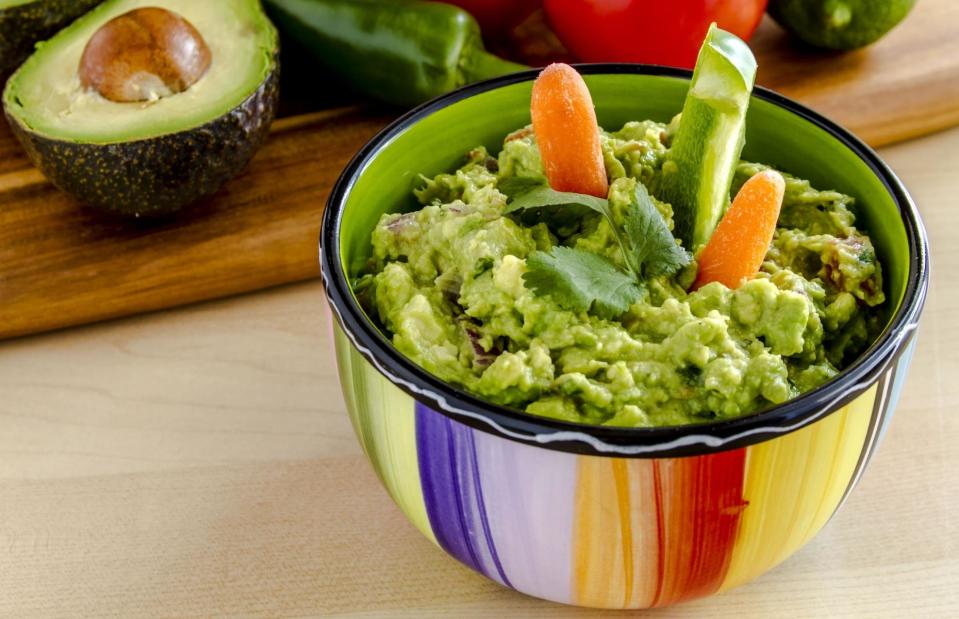
Teri Verbickis/Shutterstock
Carrot batons at the ready! It's time to start scooping that guacamole – and not just because it's a delicious snack. Research from the University of Ohio has found that avocados and carrots are a winning partnership; the heathy fats in avocados help our bodies gain 12 times more vitamin A from carrots than we would if we ate them on their own. The nutrient helps us fight illness and infection, and boosts eyesight.
Cheese and oatcakes
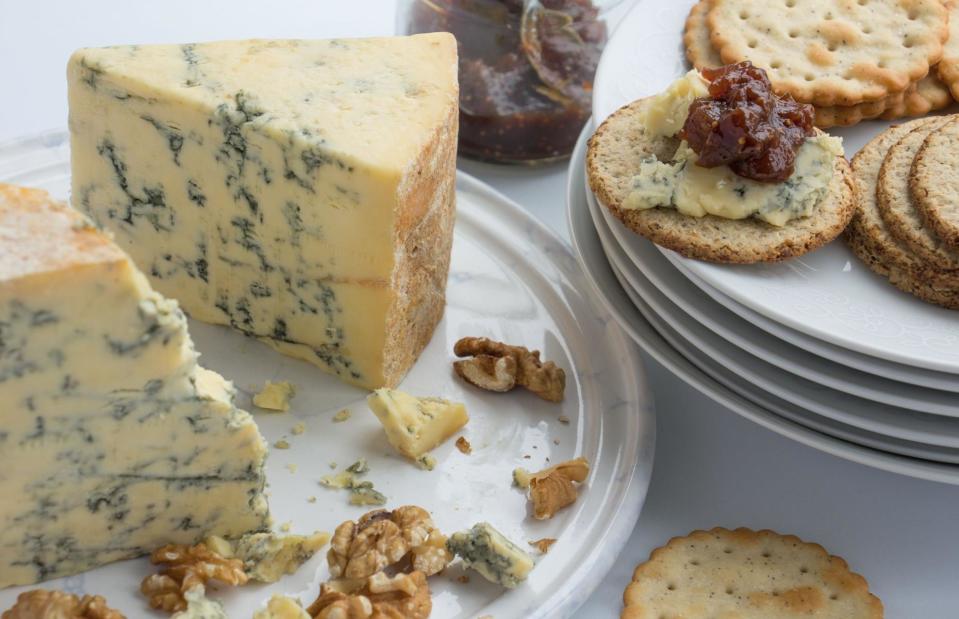
Dawn Gilfillan/Shutterstock
This one's a classic combination – and for very good reason. "Blood sugar monitors have helped people become more aware of their blood sugar balance, and realise that it's sugars, not fat, that are hugely detrimental to our longevity and health," says Jen. "A simple rule is 'no naked carbs': try not to eat grains on their own, because our bodies break them into glucose so quickly. An oatcake is great, but it needs a protein or fat present; a slice of cheese is perfect."
Flaxseed oil and broccoli
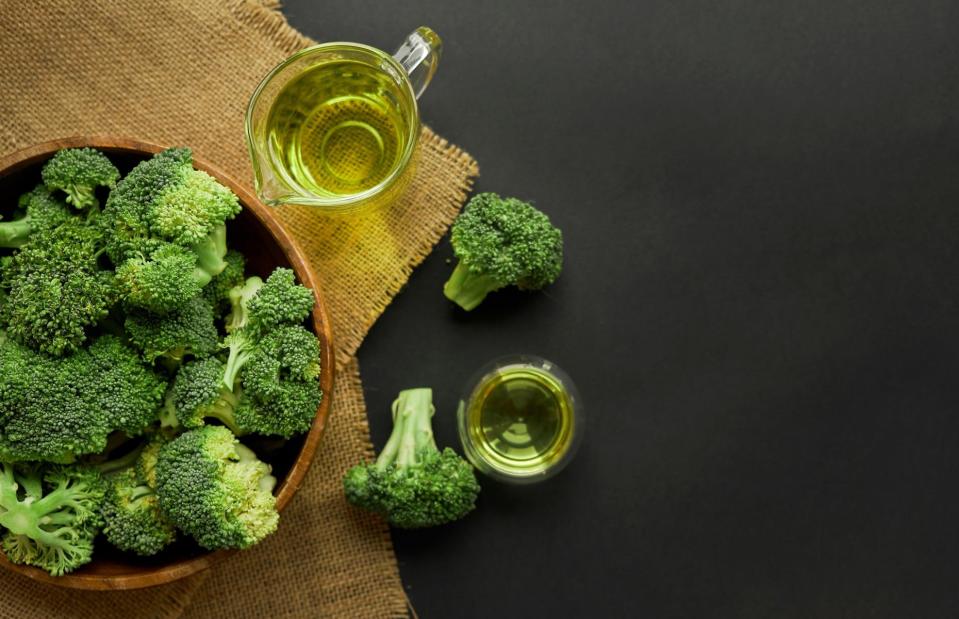
Elvira Koneva/Shutterstock
"When it comes to micronutrients, many vitamins are fat soluble, which means we need to combine them with healthy fats for our bodies to absorb them," says Jen. That's why steamed broccoli, which contains vitamins A, C and K, might classically be served with an oily fish (though a good plant-based swap would be to add a drizzle of flaxseed oil along with a lean protein). "Olive oil is always good, but flaxseed is a great way vegans can get those Omega-3s," adds Jen.
Garlic and lemon
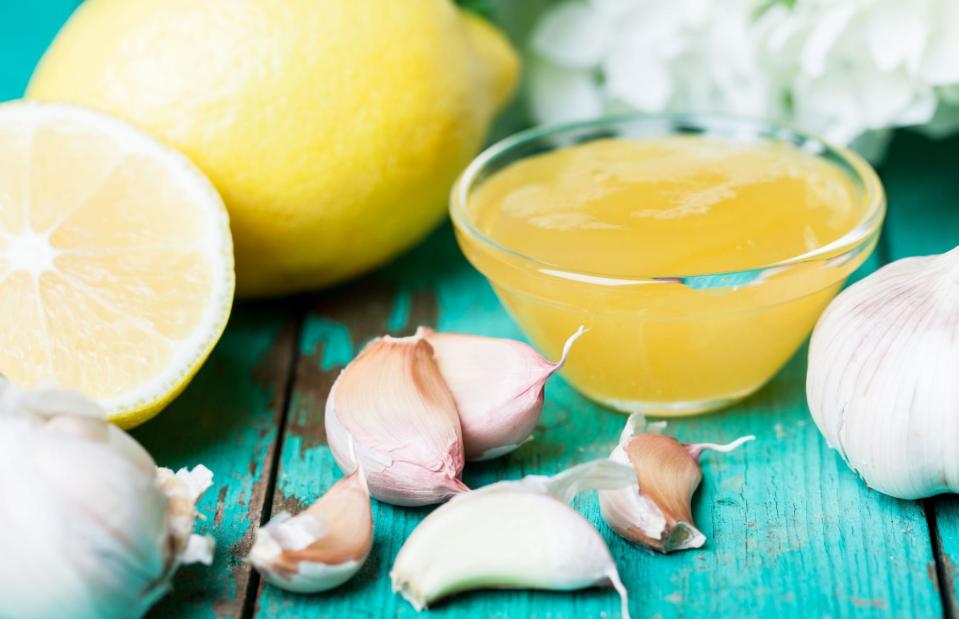
Alexeysun/Shutterstock
Research published in the International Journal of Preventative Medicine makes cheering reading for fans of homemade salad dressings. Scientists have found that garlic and lemon juice, both known to have cholesterol-lowering effects, have a more potent impact when combined than when consumed separately. Participants enjoying the two ingredients together measured lower LDL-cholesterol (the unhelpful type), lower blood pressure and even reduced BMI. For optimal effects, make a fresh batch of dressing each time you need to use it.
Hard-boiled eggs and salad
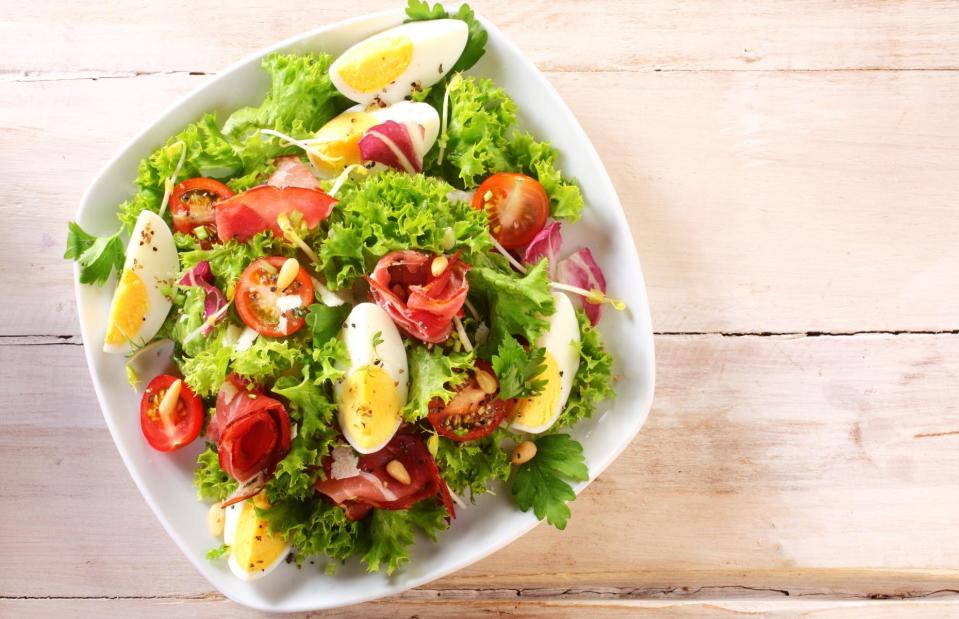
stockcreations/Shutterstock
Researchers in the US studied what happens when people ate differing amounts of hard-boiled eggs along with a salad of baby spinach, tomatoes, shredded carrots and romaine lettuce. Those eating up to three eggs with their salad saw their intake of carotenoids go up between three- and ninefold. These nutrients form the bright colours in vegetables and support our immune system, growth and eye health.
Kale, goats' cheese and mushrooms

TobinCStudioShutterstock
Whether you pack them into a quiche, savoury pancake or simple salad, you can rely on this tasty trio to deliver a huge nutritional boost. "Vitamin D helps our bodies absorb calcium, but vitamin K2 is important to direct that calcium into our bones, so we need to think of those three together," says Jen. "We can get vitamin K from dark green leafy vegetables, and teaming it with a good source of fat will help with our absorption of those nutrients." Calcium is also found in kale and dairy, and mushrooms are a good source of vitamin D.
Lemon and spinach
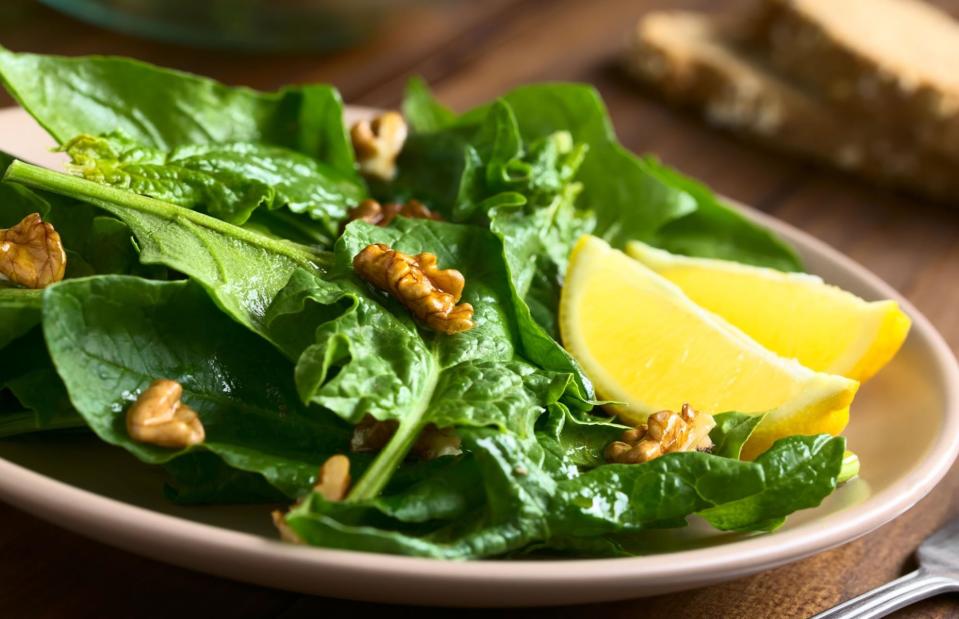
Ildi Papp /Shutterstock
"Although iron is much easier for us to absorb when it comes from meat sources, we can get it from vegetables such as spinach," says Jen. "We're better able to access it, though, with help from vitamin C, which helps change the iron from one form into another that our bodies can use more efficiently." Jen recommends a generous squeeze of lemon juice over a side dish of cooked spinach, which is easier to eat in bigger portions than raw spinach.
Lentils and peppers
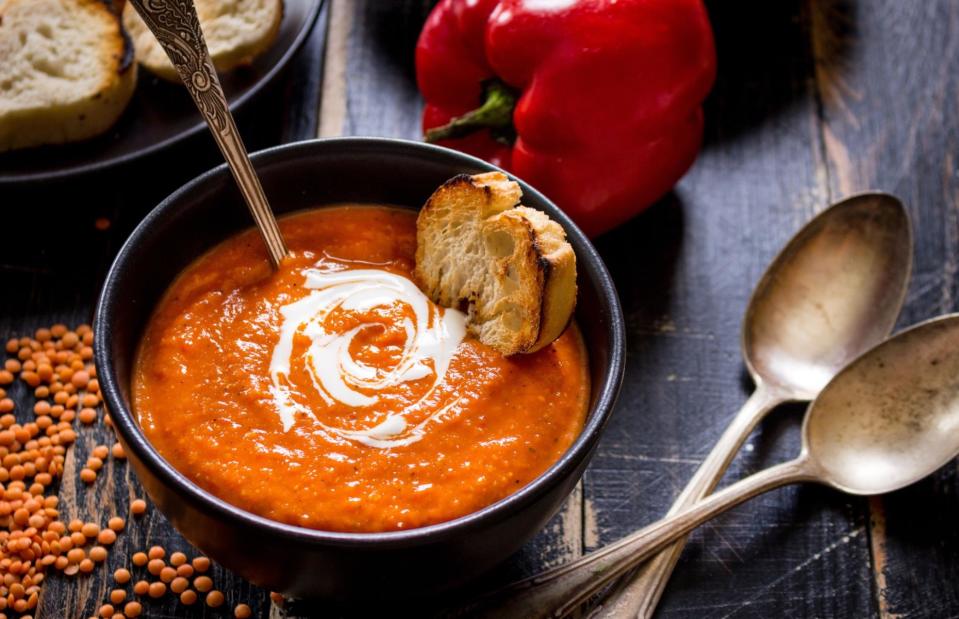
Elena Eryomenko/Shutterstock
"Legumes like lentils and chickpeas are also rich in iron, so dietary sources of vitamin C – such as peppers or tomatoes – make a good food pairing," says Jen. You could try roasted red peppers with brown lentils in a warming soup, raw pepper and puy lentils in a hearty salad with goats' cheese, or a slow-cooked dal of soft peppers and red lentils. Delicious!
Lime and avocado
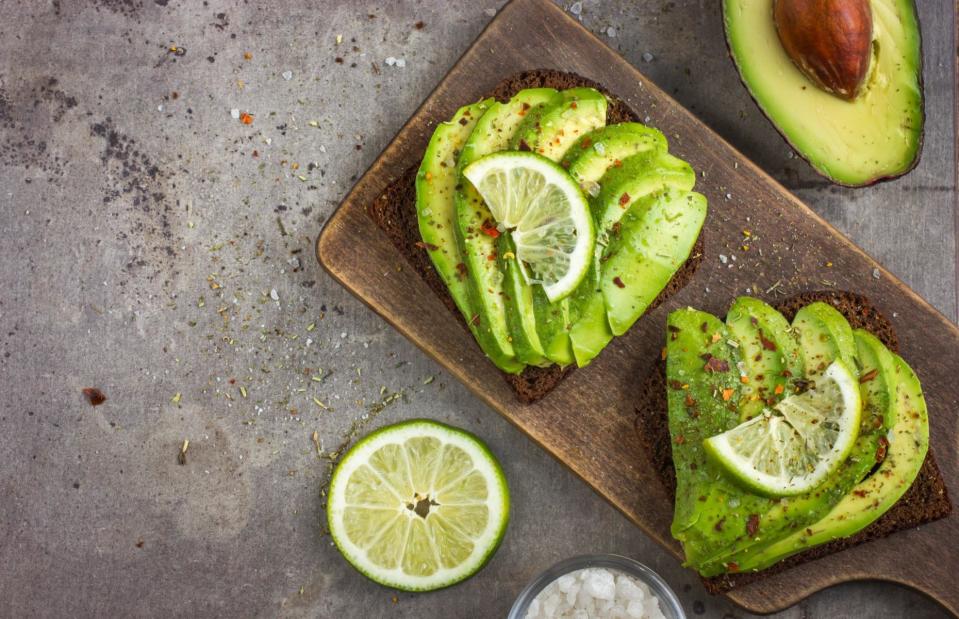
Anna Shepulova/Shutterstock
Some pairings help to make healthy yet not-so-appealing foods easier for us to love. Take lime juice, which is packed with immune-supporting vitamin C, but also tastes mouth-puckeringly sour – and avocado, which is full of heart-healthy fats, but has a rather bland flavour on its own. Combined, the two make a fabulously zingy duo that's the perfect basis for salads, guacamole and salsa. Adding leafy herbs, fresh chilli and raw red onion further boosts the nutritional benefits.
Liver and tomatoes
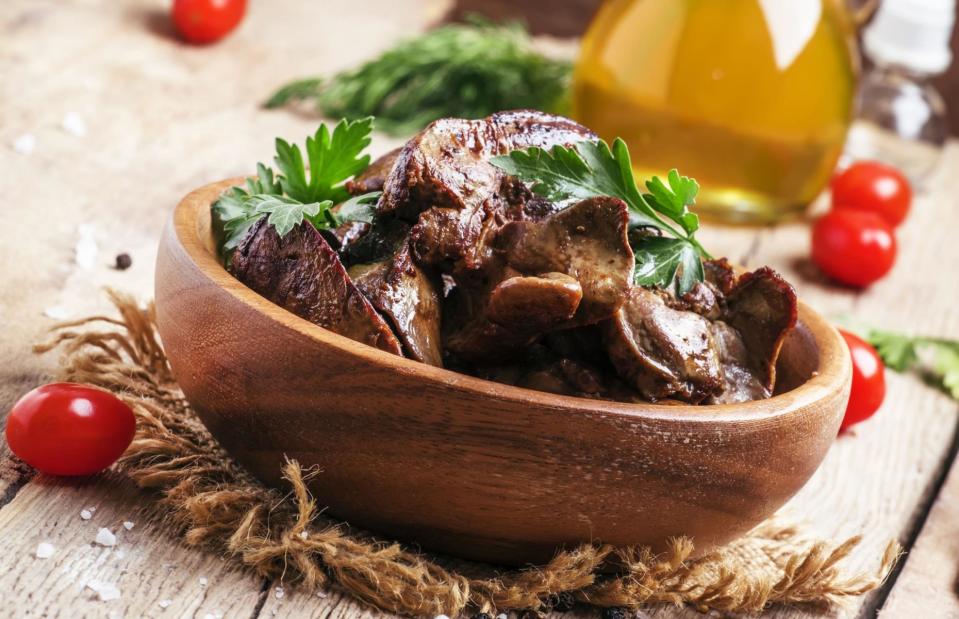
5PH/Shutterstock
Not everyone loves liver, but this nutritional powerhouse rewards determined diners with high levels of vitamin B12 and iron, which help our blood cells work. "It's a great example of a food with lots of nutrients all in one place," says Jen. "A good way to use it is in a Bolognese or chilli. Chopping or blending it up will change the mouthfeel, which some people don't like. Meanwhile, tomatoes are rich in vitamin C, which will help support iron absorption."
Mangetout and butter
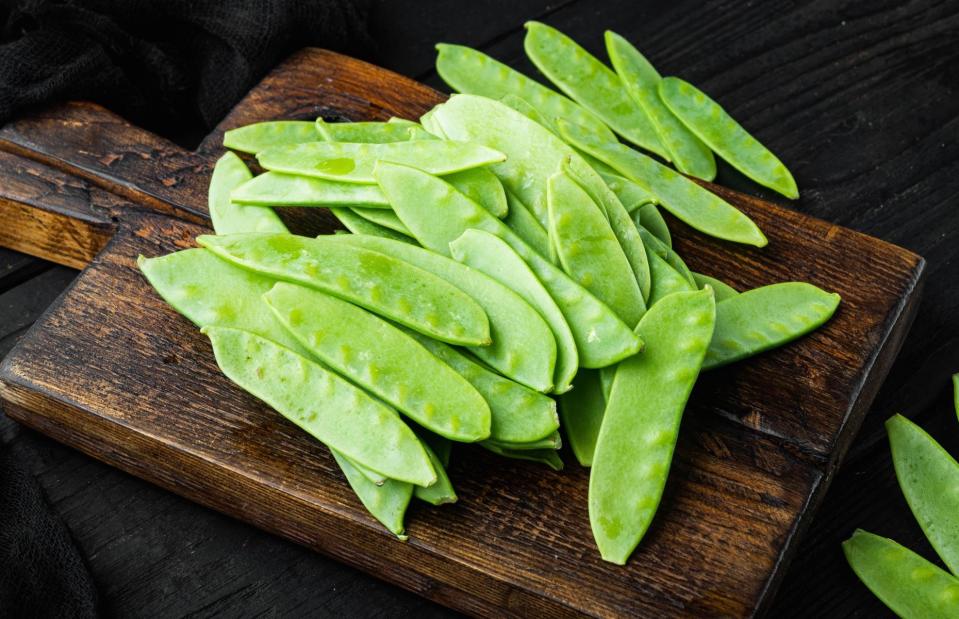
Ilia Nesolenyi/Shutterstock
Gently steamed with butter, fresh pea pods are one of life's simple pleasures – and it turns out that they're as good for our health as they are for our overall happiness. "Sautéing vegetables in a little bit of butter is a good way to boost their nutrients," says Jen. "We shouldn't be scared of fats – our bodies need them. A thumb-sized portion on every plate helps our bodies access the fat-soluble vitamins we need."
Milk and coffee

amKanobi/Shutterstock
If this one's already locked into your routine, rejoice! Researchers at the University of Copenhagen found that adding dairy milk to coffee doubled the brew's anti-inflammatory effect on immune cells. While further research is needed, the study's authors concluded that the proteins in milk help polyphenols – a family of nutrients found in plants – to get to work reducing oxidative stress in our bodies. Just remember to skip the sugar; it's known to increase inflammation.
Mushrooms and olive oil
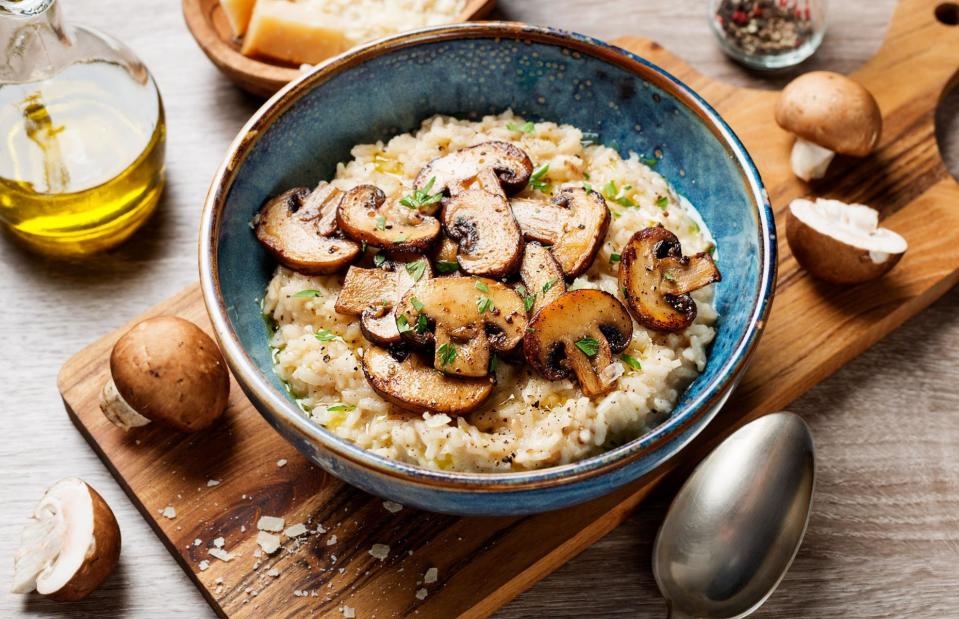
Nelea33 /Shutterstock
Did you know that the way you eat mushrooms can have an impact on the strength of your bones? "Pairing vitamin-D rich foods with healthy fats is a really good way to get the most from their nutrients," says Jen. "For example, growers drench mushrooms in light to enrich their vitamin content. If you eat them with a drizzle of olive oil, your body will be able to absorb more of those nutrients, and it will also reap the benefits of that heart-healthy oil."
Nuts and raisins
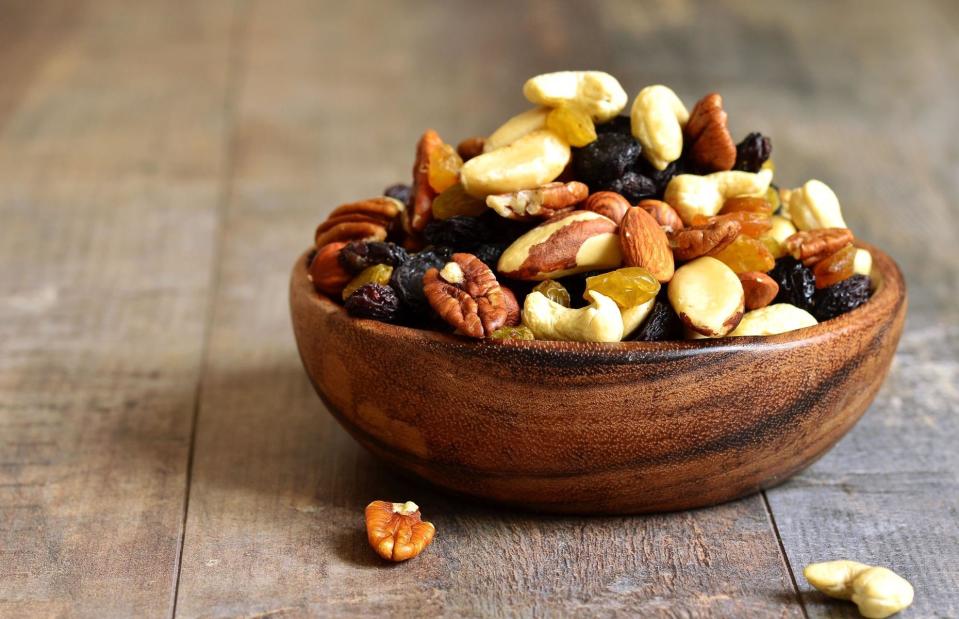
Lilliya Kandrashevich/Shutterstock
Lots of unhealthy snack foods give our bodies a sugar high, followed by a bout of sluggishness – but there are better options out there. "Together, nuts and raisins are perfect; a handful of both and you're good to go," says Jen. Why? "Dried fruit is particularly high in fructose, so it needs an extra helping of fat and protein to slow those sugars as they enter the bloodstream. Nuts are great for that, and little packs are easy to pick up at shop counters when you're out and about."
Onions, beans and garlic
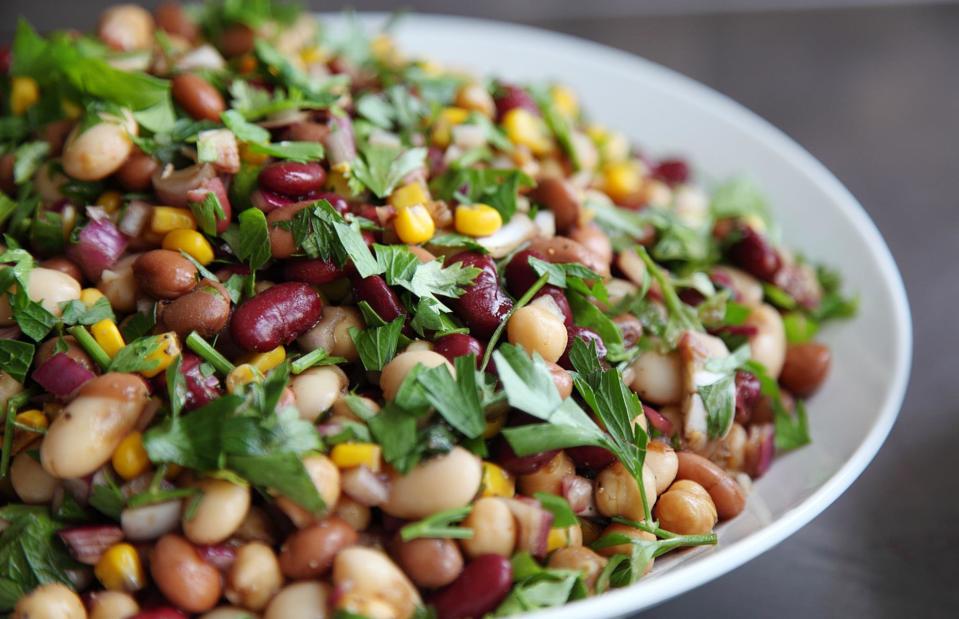
Goode Imaging/Shutterstock
Adding onions and garlic to beans is a no-brainer in many cultures; think dressed Mediterranean salads filled with cannellini beans, slow-cooked breakfast beans and Tex-Mex refried beans. There's a good reason for the classic combo – it could help us fight off illness. Research conducted in India shows that zinc and iron, both of which are scarce in plant-based diets, can be boosted by eating the trio of ingredients together.
Parsley and pumpkin seeds
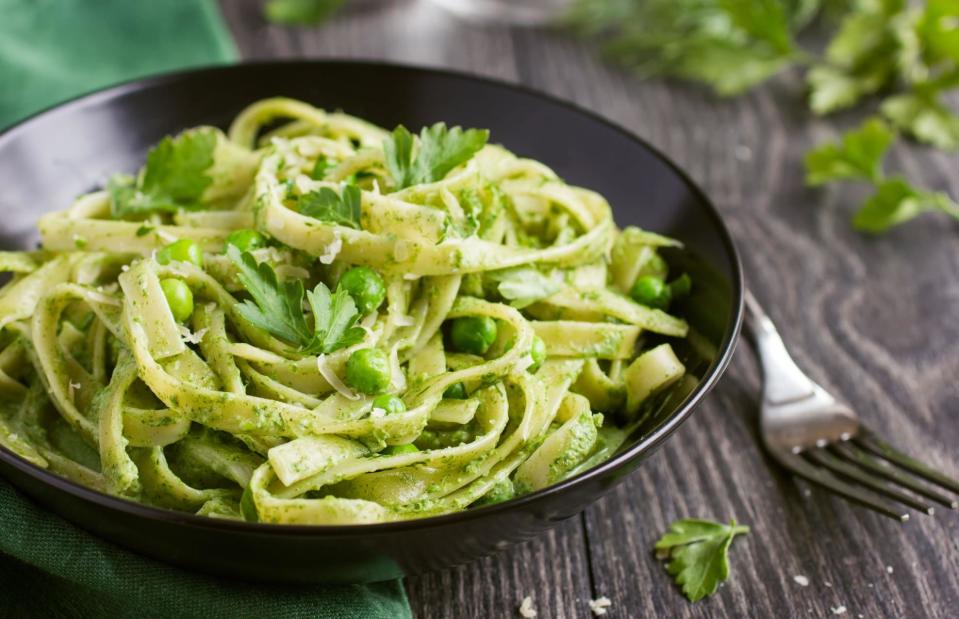
Anna Shepulova/Shutterstock
Another hack for boosting iron levels comes via a plant-based combination that's perfect for pepping up wholemeal pasta. Fresh parsley is a great source of vitamin C, which enables our bodies to use the iron in raw pumpkin seeds – a delicious garnish. "It's important to think about your whole plate; consider your macronutrients too, to make sure you're getting a balance of healthy fats, protein and a higher-fibre form of carbohydrate," says Jen.
Rosemary and beef

MaraZe/Shutterstock
Adding fresh herbs to your diet will give you a boost of phytonutrients – the vitamins and minerals found in plants – and will help provide the variety your gut bacteria need to thrive. There may be more benefits, too; research conducted at the University of Kansas has found that flavouring beef steaks with herby marinades can significantly reduce the level of carcinogens found in the meat once grilled. It's believed that the special acids present in rosemary contribute to this effect, lowering the health risks of eating beef cooked at very high temperatures.
Salmon and broccoli
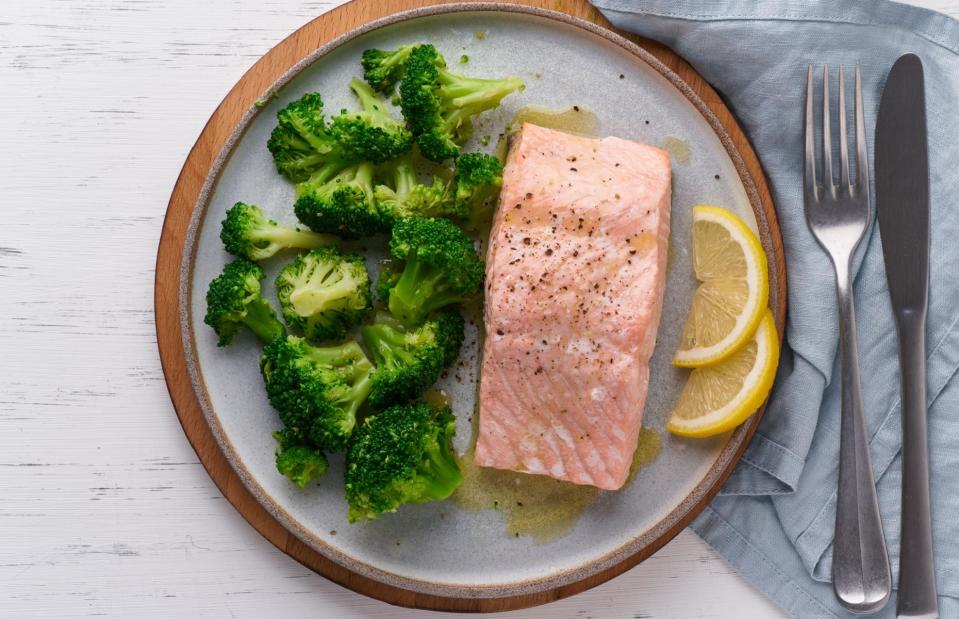
Nata Bene/Shutterstock
For those who eat fish, there are few combinations as simple and nutritious as steamed salmon and green vegetables. "It's a really nice pairing," says Jen. "That lovely Omega-3 in the salmon is a nutrient we should be having regularly, and it helps us access the vitamins in the broccoli. There's also vitamin D in the salmon; we primarily get our vitamin D from sun exposure, but we know it's a nutrient that many people are deficient in and should be getting more of."
Sardines and lemon
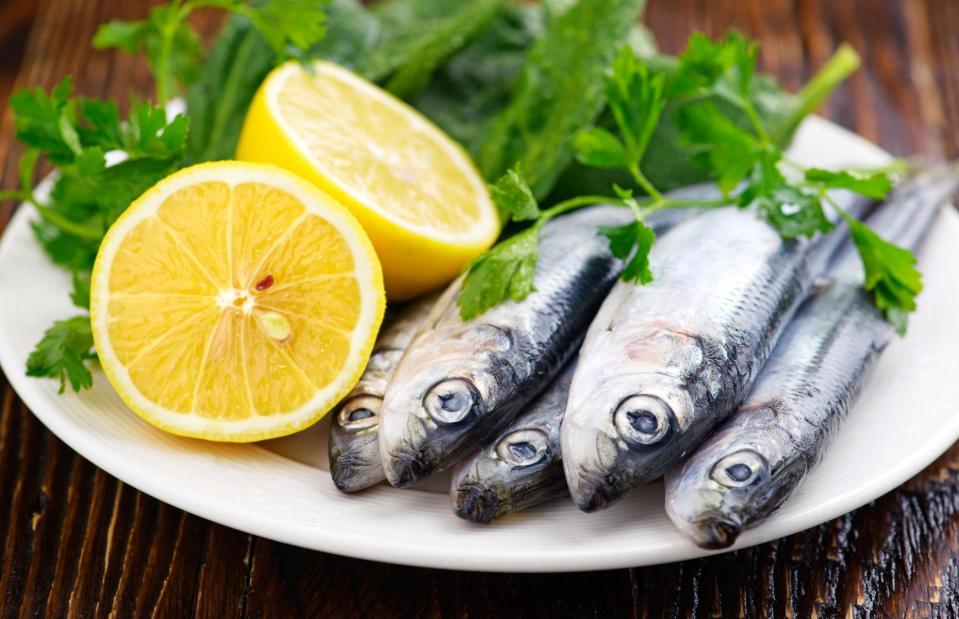
nelea33/Shutterstock
These cheap, oily fish are a great source of nutrients that strengthen our bones, keep our hearts healthy and benefit our blood pressure. They're also packed with iron, which is even more useful to our bodies with a squeeze of vitamin-C rich lemon juice – but there's one more reason to add a touch of citrus. It tastes delicious! "Using dressings like lemon juice can work really nicely to help us enjoy an oily fish such as sardines," says Jen.
Seeds and stir-fry
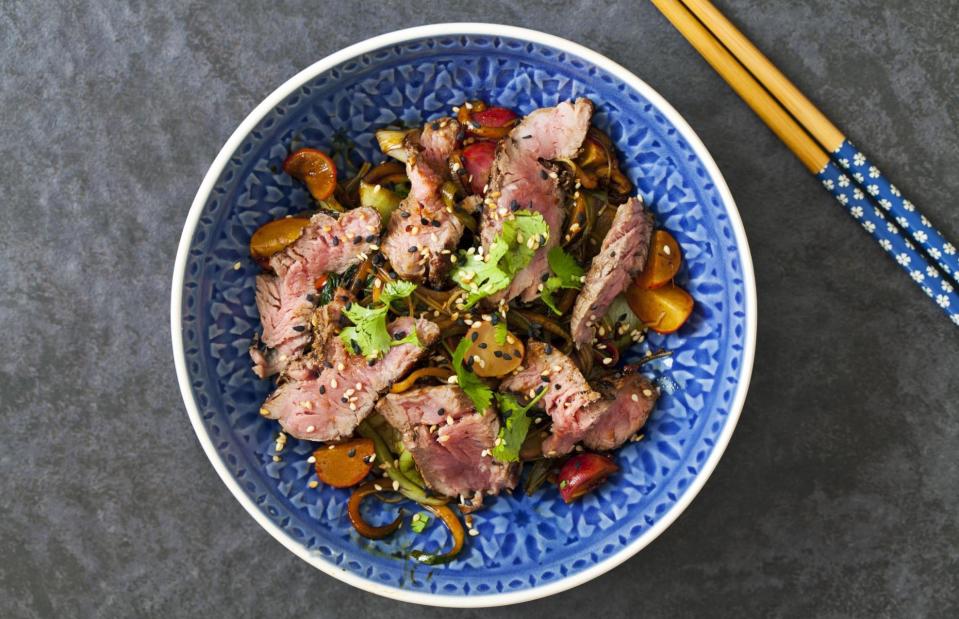
Magdanatka/Shutterstock
A drizzle of toasted sesame oil adds an extra dimension to many South Asian dishes. However, heat-extracted seed oils will have lost the nutrients we need to boost our brain health – so Jen recommends we go straight to the source. "Sesame seeds are great on Asian dishes; they're a really good plant source of the healthy fats we need with our vegetables," she says. "The same goes for sunflower seeds, which have zinc, magnesium, vitamin E... all the nutrients that are stripped out to make seed oils."
Tahini and squash
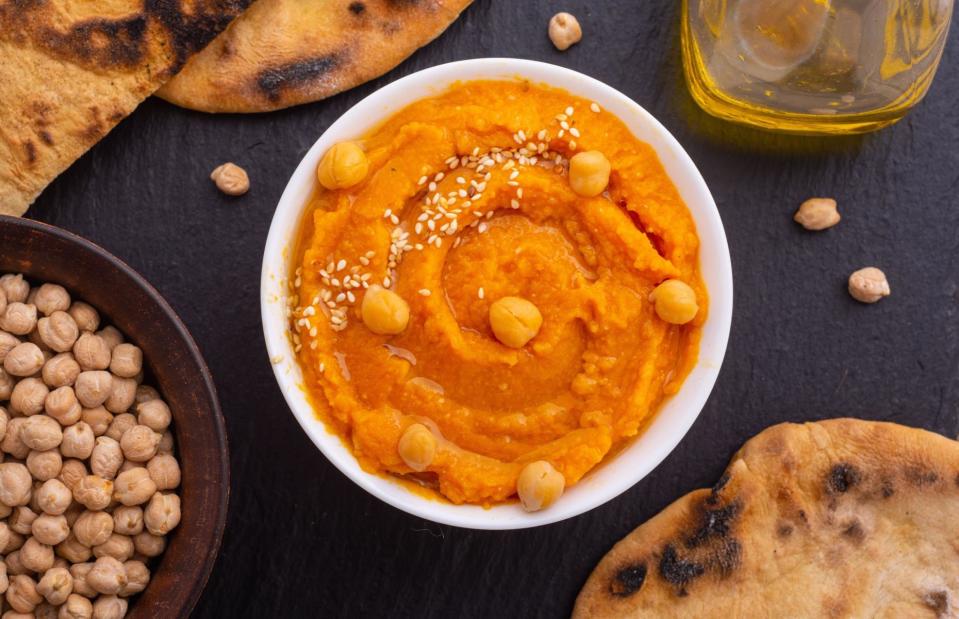
AlexeiLogvinovich/Shutterstock
Omega-3s are known as essential fatty acids as they're vital for the normal functioning of every cell in our bodies. "Tahini, which is made from sesame seeds rich in Omega-3, is a really healthy source of fat, so it makes a great dressing for vegetables," says Jen. "Vitamin A, found in a lot of orange vegetables such as squashes, sweet potatoes and carrots, is an example of one of those vitamins that we really need to be pairing with a fat, so having tahini dressing drizzled on slow-roasted squash is ideal." Alternatively, blitz your tahini with roasted squash for a tasty dip.
Turmeric and black pepper
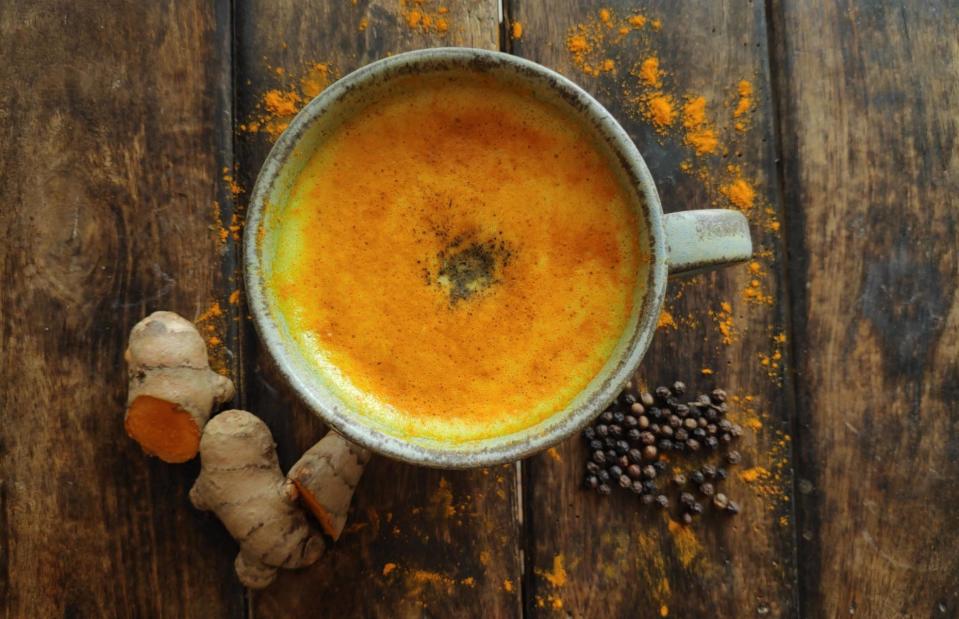
Capturastock/Shutterstock
Turmeric's golden colour brings a sunny glow to everything from dals and pilafs to soups and smoothies. The anti-inflammatory effect of its active ingredient, a compound called curcumin, also makes it a natural painkiller; research published by the National Library of Medicine suggests it can help with everything from arthritis to anxiety and post-exercise aches and pains. Studies have found that curcumin is most effective when paired with black pepper – so feel free to add a good grinding to your curries and lattes.
Walnuts and chamomile tea

gresei/Shutterstock
Could a soothing snack before bed help you sleep? Maybe so – if it's a handful of walnuts and a cup of chamomile tea, that is. A clinical review of randomised control trials – the gold standard in research – found a significant increase in sleep quality from drinking chamomile tea before bed. Walnuts have also been proven to improve sleep in trials involving mice; the nuts are a natural source of melatonin, a hormone that readies our bodies for sleep.
Yogurt and berries
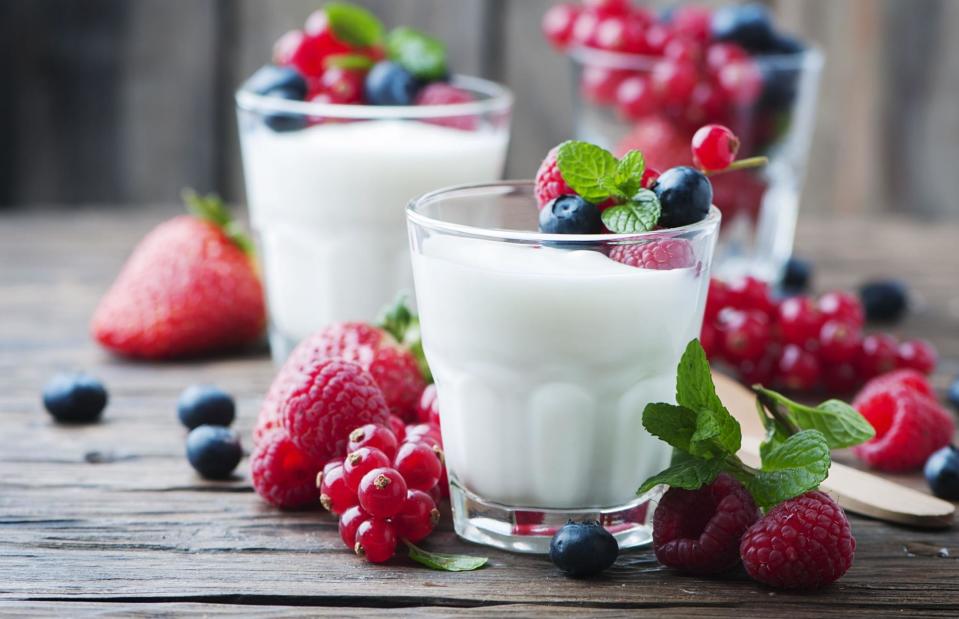
Oxana Denezhkina/Shutterstock
Not only do berries and yogurt make a great-tasting pair, but a clinical review has suggested that the fibre in the fruits can help healthy live probiotics in the dairy make their way to the gut. While these two ingredients make a perfect smoothie, further research conducted at the University of California suggests that we shouldn't add banana to the blend; the study found that adding a banana to blitzed berries reduces the amount of flavanols our body will receive by up to 84%.
Now discover an A-Z of foods that can help improve your gut health


